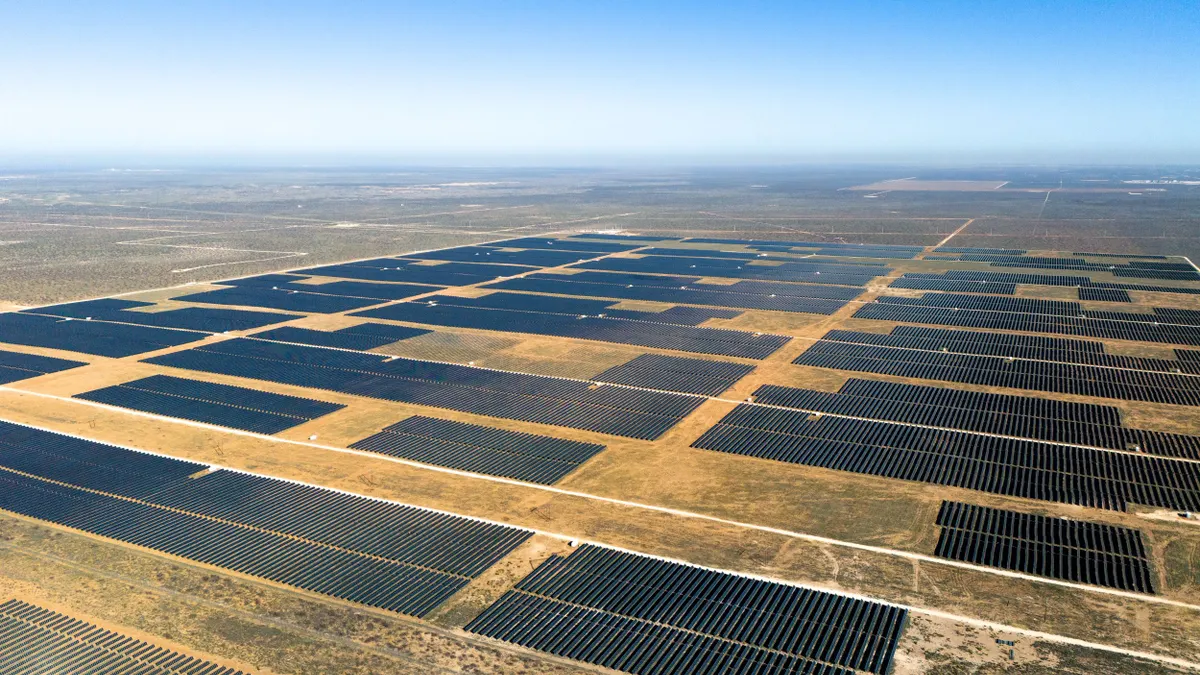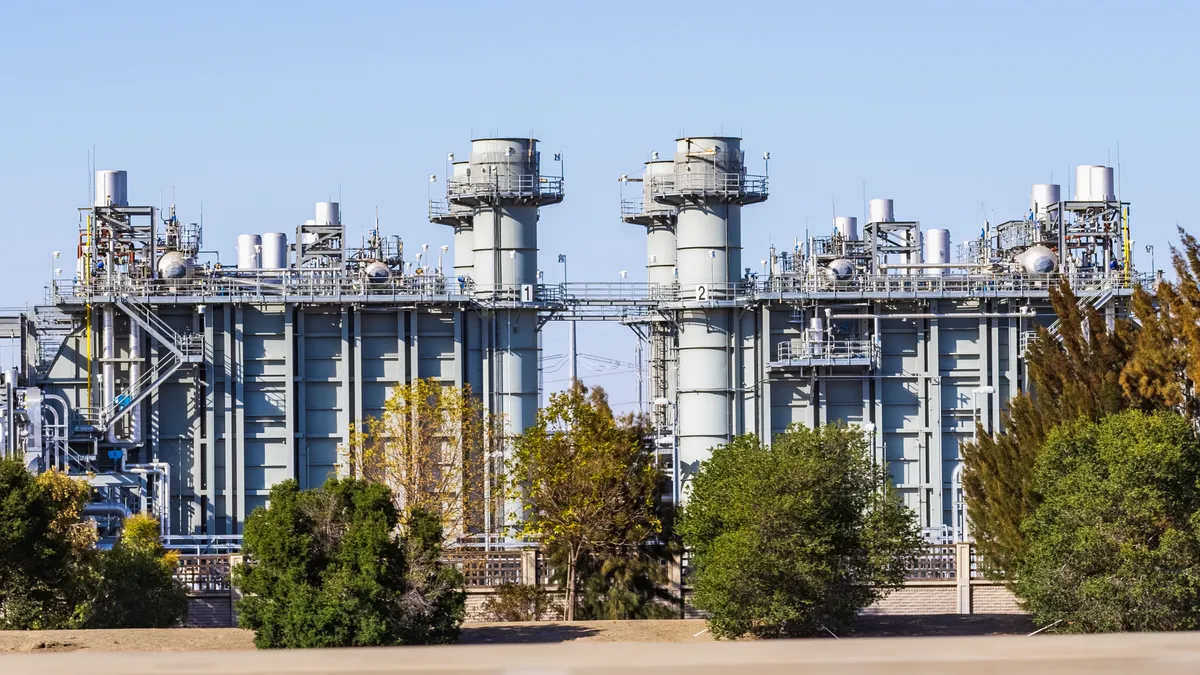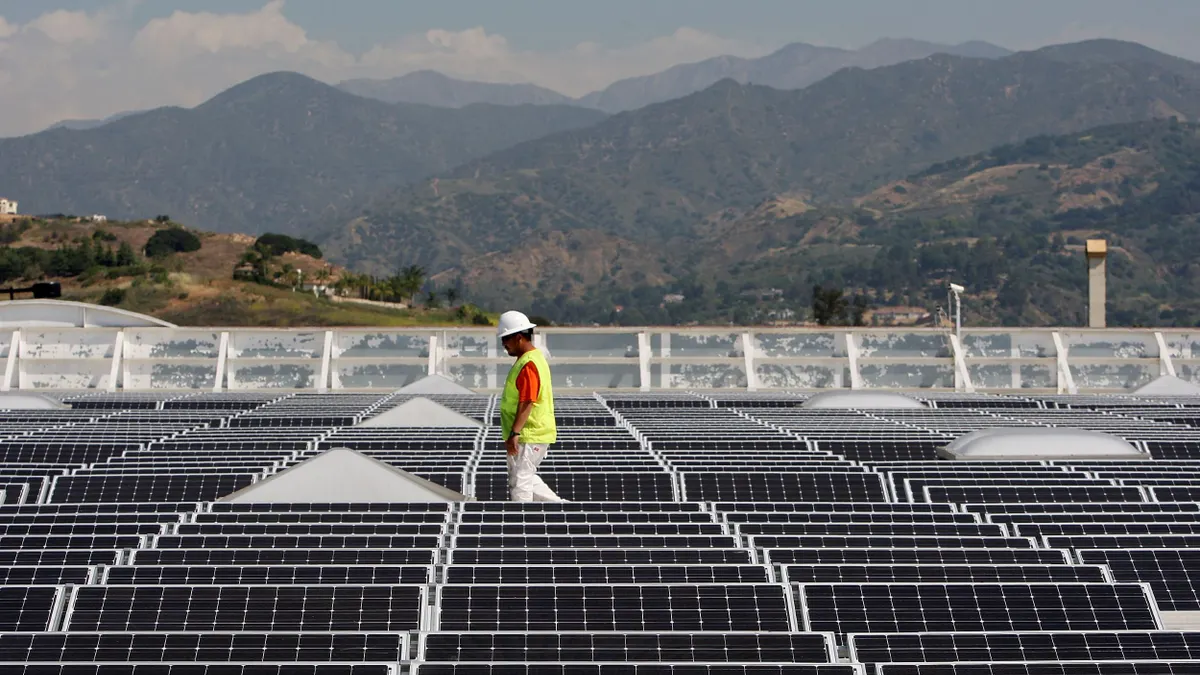This article is part of a series on the key issues driving the utility sector in 2019. All stories in this series can be found here.
At the top of the 2019 agenda for many energy storage stakeholders is the finalization of new rules for energy storage in wholesale power markets under the Federal Energy Regulatory Commission's Order 841, but analysts say the biggest impact on deployments is likely to be less dramatic and more incremental: the growing number of utilities that are including energy storage in their planning process.
"I anticipate the majority of storage development will be fueled by state policies in 2019 rather than changes in federal regulations," Caileen Gamache, senior counsel with Norton Rose Fulbright, told Utility Dive.
Last year, Massachusetts, New York and New Jersey adopted energy storage targets, joining the ranks of the two first states to adopt targets, California and Oregon. Meanwhile, even without the impetus of a target, a growing number of utilities are including energy storage in their resource planning processes.
"At the state level, we will see more utility procurement," analyst Alex Eller at Navigant Research told Utility Dive. He noted that just last week El Paso Electric announced the results of a competitive solicitation that includes 100 MW of storage.
Racking up RFPs
In Nevada, the state's largest utility has lobbied against an energy storage target, but in October NV Energy included energy storage in its planning process when it issued a request for proposals for 350 MW of renewable resources and supplemental energy storage. In December, Colorado adopted an order requiring utilities to consider energy storage in their resource planning process.
Those actions will have "a snowball effect" as more and more utilities follow suit and as stakeholders share knowledge and "do the analysis on where storage works and where it doesn't," Eller said.
"...the developers that I work with and I are essentially setting storage precedent."

Caileen Gamache
Senior counsel, Norton Rose Fulbright
Gamache said she has seen a rise in RFPs for renewable-plus-storage projects, as well as stand-alone storage projects, issued by investor owned utilities and municipal utilities. She has even seen several developments in the Southeast, a region generally outside the reach of wholesale power markets and where most states do not have programs promoting energy storage.
"The off takers appear to be relying upon bidders and sellers to essentially 'educate' them on all the benefits and uses of storage," Gamache said. "This is one of the most exciting areas of my practice currently, because the developers that I work with and I are essentially setting storage precedent."
One of the results of this trend is that as more utilities incorporate storage into their systems, it will change the way utilities think about how much intermittent renewable resources their systems can integrate, particularly in regions that are expecting substantial amounts of retirements of older resources, such as coal and nuclear power plants, Judy Chang, a principal at the Brattle Group, told Utility Dive.
Chang expects to see more retirements, particularly of coal plants, in the Midcontinent ISO, the PJM Interconnection region and in the West.
As those retirements proceed, and the costs of wind and solar continue to fall, more and more utilities are going to be looking at replacing the retiring capacity with renewables, including renewables paired with energy storage.
"This is a turning point," Chang said. When Brattle did a study on the potential for energy storage the Electric Reliability Council of Texas region in 2015, "utilities thought storage was a nuisance. Now, many are considering storage in their investment planning."
Giving storage its due (tax) credit?
Pairing energy storage with renewables could be even more attractive if a federal Investment Tax Credit (ITC) is available for those projects. In November, a coalition led by the Energy Storage Association asked Congress to clarify the rules for the ITC for energy storage projects by passing The Energy Storage Tax Incentive and Deployment Act (H.R. 4649 / S. 1868).
The political reality, however, is that any political cooperation in 2019 is taking place against the backdrop of the continuing budget impasse and partial government shutdown.
"We anticipate ongoing pugilism more than policy cooperation in 2019," Tim Fox, vice president at ClearView Energy Partners, told Utility Dive. So, "despite bipartisan interest in energy storage, enacting an expanded ITC for energy storage faces an uphill climb in the 116th session," he said.
Even without further clarity on a stand-alone ITC, a tax credit is still available for energy storage that is tied with solar projects, but it is limited by how much the batteries are charged by renewable energy. Being able to include the cost of batteries in such projects, combined with an expectation of continued cost declines for solar and storage systems, could make 2019 a record year for solar-plus-storage deployments, Ravi Manghani, director, energy storage at Wood Mackenzie Power & Renewables, told Utility Dive.
While it is important not to downplay the potential impact of FERC Order 841 on the energy storage market, "utility procurements are more attractive because they have a bankability advantage over merchant projects," Manghani said. The security provided by a utility off take contract allows a developer to significantly lower their capital costs.
In addition, the legislatively mandated step down of the ITC provides a strong near term impetus for getting projects in the ground sooner rather than later. To be eligible for the ITC at current levels, a project has to be in construction by 2023. That means "a lot of that procurement will have to happen this year," Manghani said.
Taking on gas generation
In addition to the paired-storage market, Manghani sees strong growth potential for energy storage to replace gas-fired peaking plants. Using aggressive assumptions of battery storage cost declines of 10% to 12% every year through 2026, the share of new peaker capacity taken by batteries could rise to as much as 80%, he said.
According to Brattle's modeling, some systems with high renewable energy deployments in the late 2020s and 2030s could be short of peaking capacity and be in a position to benefit from the ability to store excess generation during periods of high renewable generation to reduce waste due to curtailment.
Peaker replacement could become an increasingly attractive option for utilities, especially in states with "super targets," that is, states with renewable portfolio standards of 50% or more, such as California and Hawaii, Timothy Fox, vice president at ClearView Energy Partners, told Utility Dive.
Even with relatively conservative projections of 6% to 8% annual energy storage cost decreases, Wood Mackenzie projects energy storage could threaten up to 6.4 GW of peaking capacity needs by 2026.
"That said, I don't want to limit importance of 841," Manghani said. The order "effectively creates more long-term and consistent opportunities for energy storage in wholesale power markets." But, he added, those market will be "additive," that is, in addition to the opportunities on the contracted side. It will not be until about mid-2020s that energy storage will be economically competitive with other forms of merchant generation, he said.
As Fox noted, "reforms to regional electricity market regulatory constructs can enable energy storage participation in the wholesale electricity markets," but "state-led storage deployment targets or incentives can drive buildout."





















